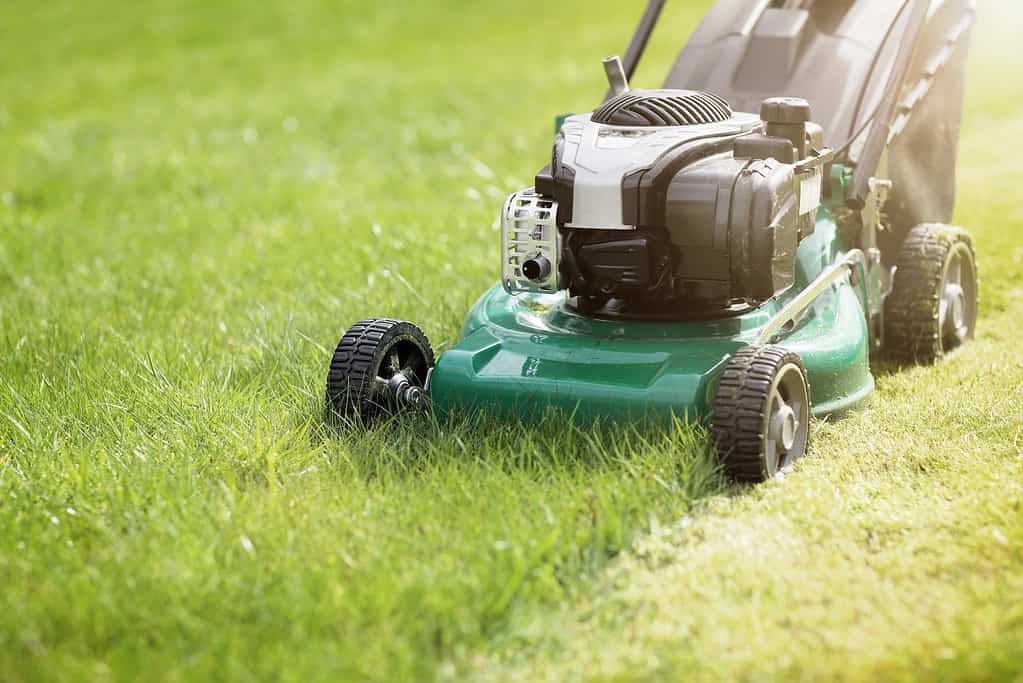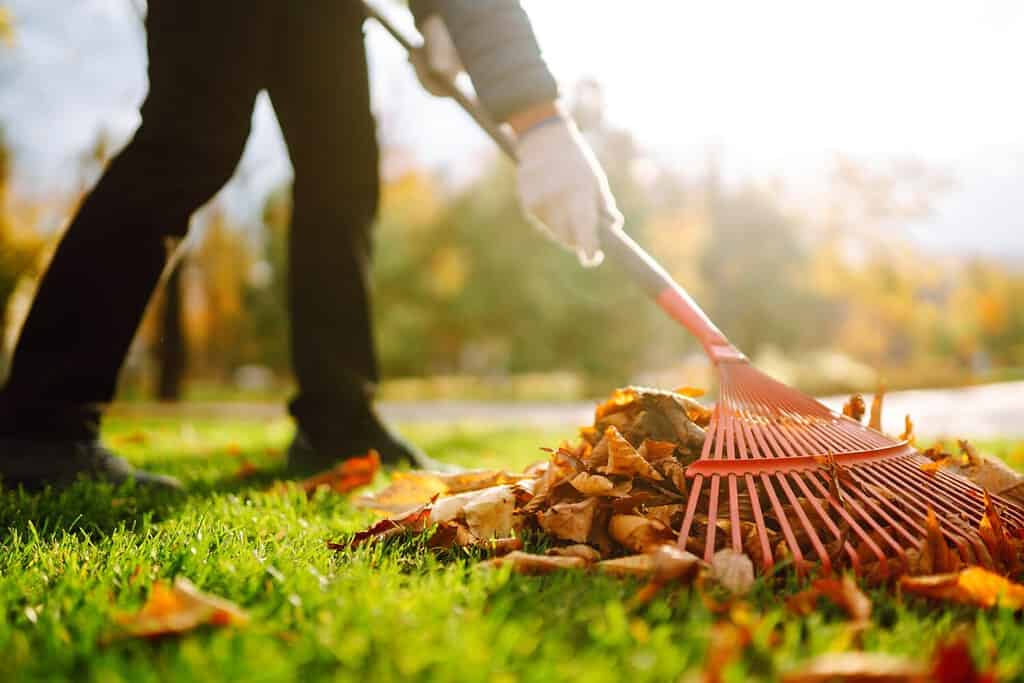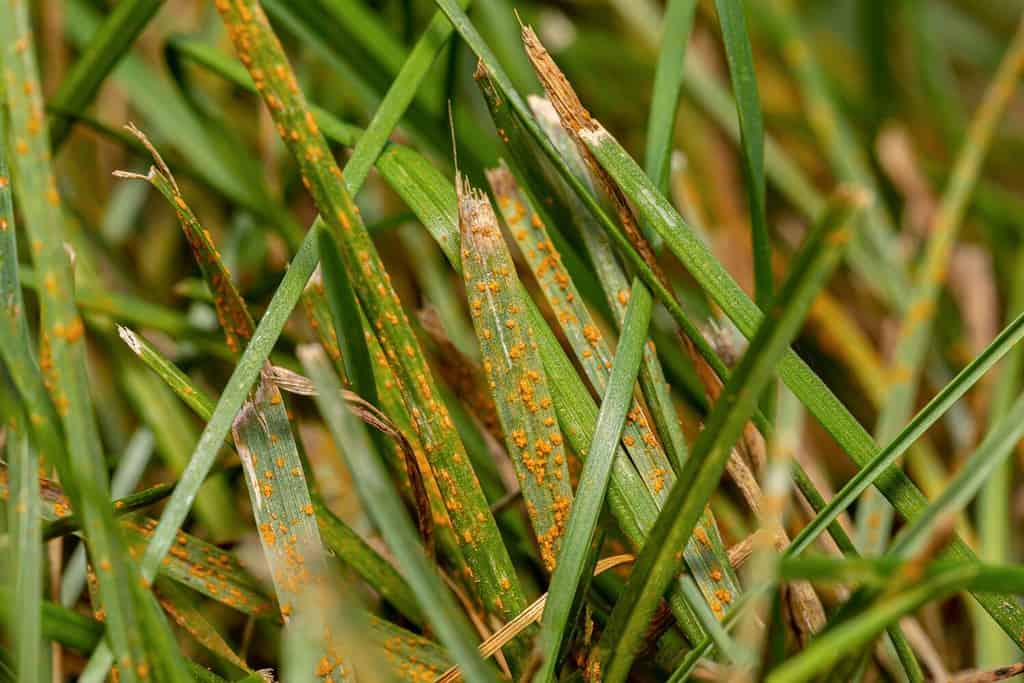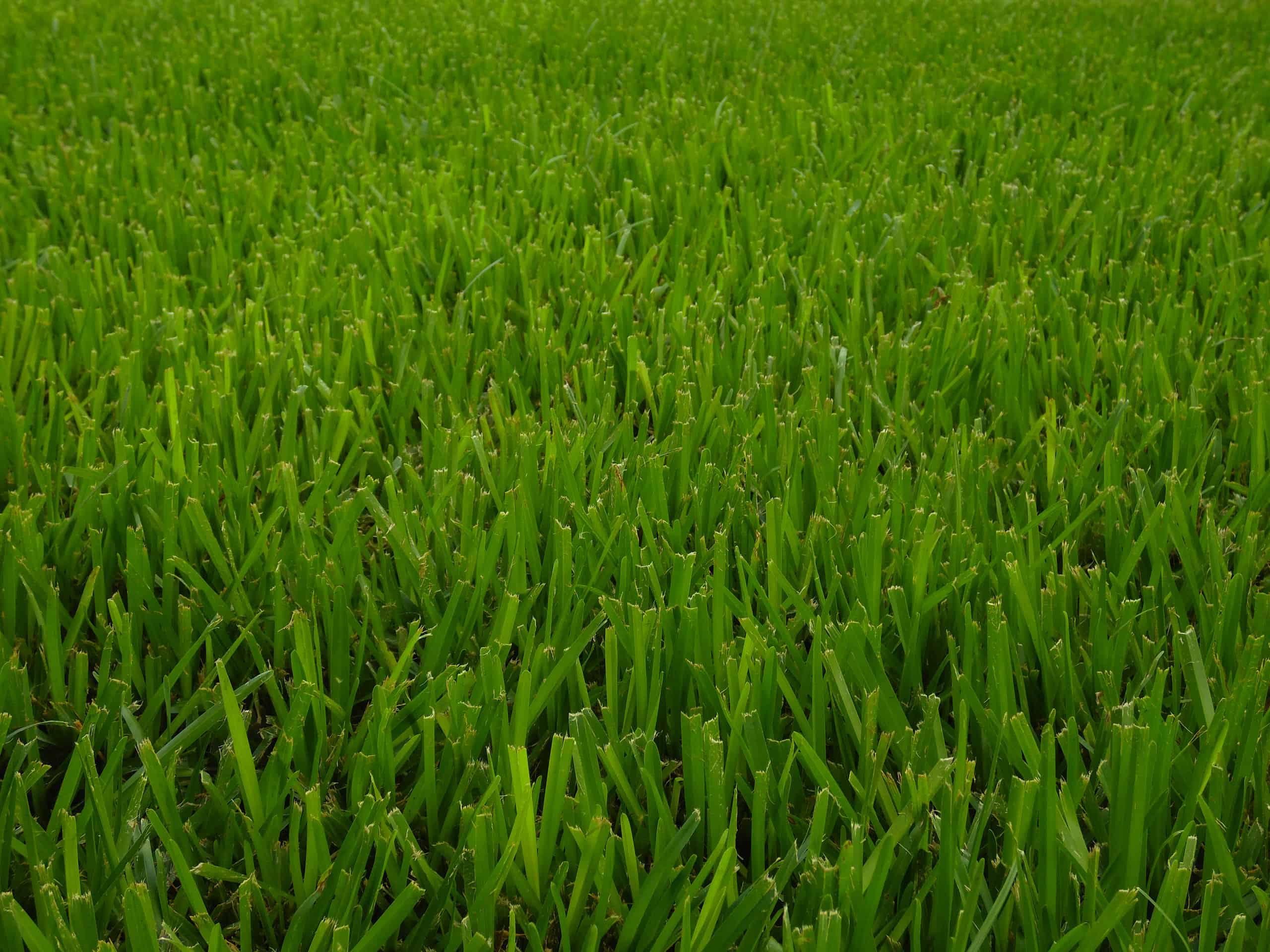If you live in Florida or one of the Gulf states, you likely have St. Augustine grass. This is one of the most popular types of grass in the region due to its heat and humidity tolerance. The blades have a bluish-green hue and create a thick turf that flourishes with ease. Here is how you can take care of St. Augustine grass when the winter months arrive.
1. Water the Lawn

It’s ideal to water grass early in the morning.
©NOPPHARAT539/Shutterstock.com
Like most other grass species, St. Augustine grass requires plenty of watering throughout the winter months. There is a myth that it needs less Irrigation in the cold weather but this couldn’t be further from the truth.
This species is semi-dormant and does indeed use less water than others, though it gets the same amount of water no matter the season. This is due to the sandy soil in the region. You’ll need to water St. Augustine grass regularly to help microbes and organic matter in the soil.
If the lawn gets too dry these microbes will die. Whether your lawn thrives is entirely dependent on how often you water it. A good rule of thumb is to water St. Augustine grass once every three weeks.
2. Give Grass Nutrients

Having the proper amount of nitrogen can keep your lawn healthy.
©Deemerwha studio/Shutterstock.com
Feeding St. Augustine grass is just as important as watering it. Technically you should be focused on watering or feeding the soil microbes. When the microbes get plenty of nutrients, they can create compost.
The sandy soils in the Gulf States and surrounding regions lack essential nutrients such as potassium and iron. Providing your lawn with micronutrients such as sulfur and nitrogen, can help it thrive throughout the winter. It is suggested to use half a pound per 1,000 square feet of turf.
3. Don’t Forget to Mow

Set your mower to the lowest setting in the summer and highest in the winter.
©BrianAJackson/iStock via Getty Images
Many people think it’s okay to stop mowing their grass when the temperatures dip. If you want your St. Augustine grass to thrive throughout the winter, continue to mow regularly. The trick to this is keeping your mower as high as the blade will go.
This prevents the roots and stems from becoming too exposed. It’s ideal to mow your grass once every two weeks. This allows the grass to slowly grow without becoming too exposed to the lower temperatures.
4. Clear Your Lawn of Debris

Raking regularly is essential to keep St. Augustine grass thriving in the winter.
©maxbelchenko/Shutterstock.com
Having debris all over your lawn can ruin the turf. Clearing things such as fallen branches, patio furniture, or leaves can limit the amount of oxygen St. Augustine grass consumes. Dead leaves and other debris can create shady areas on the lawn that don’t let enough light in.
These spots can quickly get damaged by a lack of sunlight. In order to avoid discoloration and potentially killing the grass, make sure to rake at least once a week. Before the weather gets too cold, gather up the kids and head outside to clear any natural debris off of the grass.
5. Tackle Grass Diseases

Grass can rust similarly to metal.
©J.J. Gouin/Shutterstock.com
There are a few fungal diseases that are common with St Augustine grass. Gray leaf spot, large patch, and take-all root rot are ones you may experience. You can buy or make fungicides to tackle these harmful fungal diseases.
It may take multiple applications of a fungicide to get the job done. If you have specific problem areas, apply it more often in these locations. There are various types of fungicides on the market.
If you’re using a granular variety, make sure that you water the lawn directly after application. This will help the soil absorb the product. Nematodes are also an issue in this species of grass. You can get rid of these minuscule beings by mowing tall, irrigating when the soil is dry, and fertilizing.
6. Get Rid of Weeds

Weeds can consume the nutrients meant for grass.
©Sever180/Shutterstock.com
As the weather cools down you’ll want to use pre-emergent and post-emergent herbicides to keep St. Augustine grass looking good. These solutions can help prevent pesky weeds from taking over your lawn.
Florida and states in this region can experience winter weeds that sprout up from November to April. you’ll want to apply a pre-emergent solution during the autumn months to prevalent winter weeds.
The main weeds that take over St. Augustine grass include chickweed, purple deadnettle, henbit, and poa.
7. Control Insect Infestations

Grub worms can live for about a year.
©Tob1900/Shutterstock.com
You don’t have to see insects for them to be there. St. Augustine grass is no stranger to insect infestations. Grub worms, chinch bugs, mole crickets, and sod webworms are common in this grass species.
It’s best to tackle an infestation before it starts. You can do this by applying an insecticide to your lawn. It is essential that you read the directions and follow them carefully for the best results. Following these tips will help your St. Augustine grass thrive throughout the mild winter months.
Thank you for reading! Have some feedback for us? Contact the AZ Animals editorial team.








